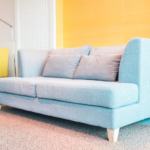When it comes to roofing options that offer both durability and aesthetic appeal, standing seam metal roofs stand out as a top choice. These roofs not only protect your home from the elements but also add a touch of modern sophistication to your property. However, achieving a flawless standing seam metal roof installation requires a combination of skill, precision, and the right materials. In this article, we’ll delve into the key steps and considerations for a successful standing seam metal roof installation.
Choosing the Right Material
Before embarking on a standing seam metal roof installation project, the first crucial decision to make is selecting the right material. The most common materials used for standing seam roofs are galvanized steel, aluminum, and copper. Each material has its unique advantages, with steel being the most affordable and durable, aluminum offering excellent corrosion resistance, and copper adding an elegant, timeless appeal. Your choice will depend on your budget and aesthetic preferences.
Preparing the Roof
Proper preparation is fundamental to the success of any roofing project. Ensure that the roof deck is structurally sound and free of any damage. Address any underlying issues, such as leaks or wood rot, before proceeding with the installation. The roof should also have adequate ventilation to prevent moisture buildup, which can lead to corrosion.
Measuring and Layout
Accurate measurements and layout planning are crucial for a seamless standing seam metal roof installation. Begin by measuring the roof’s dimensions, accounting for any penetrations like chimneys or skylights. Create a detailed layout plan that includes the placement of panels and seams. Properly marked guidelines on the roof will ensure the panels are installed in a straight and uniform manner.
Flashing and Underlayment
Installing flashing and underlayment is vital to prevent water infiltration and ensure the roof’s long-term performance. Use a high-quality synthetic underlayment that provides a protective barrier against moisture and allows for adequate ventilation. Flashing should be installed around roof penetrations and along the eaves to direct water away from vulnerable areas.
Installing the Panels
The heart of any standing seam metal roof installation is the attachment of the metal panels. Start at the eaves and work your way up towards the ridge. Use specialized clips or brackets to secure the panels to the roof deck, ensuring they are spaced according to your layout plan. Pay close attention to maintaining consistent panel alignment and spacing between seams.
Seaming the Panels
Seaming is where the “standing seam” gets its name. Properly seamed panels are essential for a watertight and durable roof. There are two primary methods for seaming: mechanical and snap-lock.
- Mechanical Seam: This method involves using a machine to crimp the panels together, creating a secure connection. It’s a more traditional approach and requires specialized equipment.
- Snap-Lock Seam: Snap-lock panels have interlocking edges that snap together without the need for mechanical seaming. While easier to install, they may not be as watertight as mechanically seamed panels.
Trim and Ridge Cap Installation
To complete the standing seam metal roof installation, add trim and a ridge cap. Trim is used to finish the edges of the roof, providing a clean and polished look. The ridge cap is installed along the ridge of the roof to seal the top and prevent water infiltration.
Quality Control and Inspection
After the installation is complete, conduct a thorough inspection to ensure everything is in order. Check for any loose panels, damaged seams, or improperly secured trim. Address any issues promptly to avoid future problems.
Maintenance and Longevity
One of the key advantages of standing seam metal roofs is their longevity and low maintenance requirements. However, it’s essential to perform regular inspections and maintenance to keep the roof in pristine condition. This includes checking for loose fasteners, cleaning debris from the roof surface, and addressing any signs of corrosion promptly.
Conclusion
In conclusion, metal building repair is an essential aspect of maintaining the integrity and functionality of these durable structures. Whether dealing with corrosion, structural issues, or weather-related damages, timely and professional repairs are crucial. Neglecting necessary repairs can lead to more extensive and costly problems down the line. To ensure the longevity of your metal building, prioritize routine inspections and address any issues promptly. Whether it’s fixing damaged panels, reinforcing structural components, or treating rust and corrosion, investing in metal building repair not only extends the life of your structure but also safeguards your investment for years to come.



